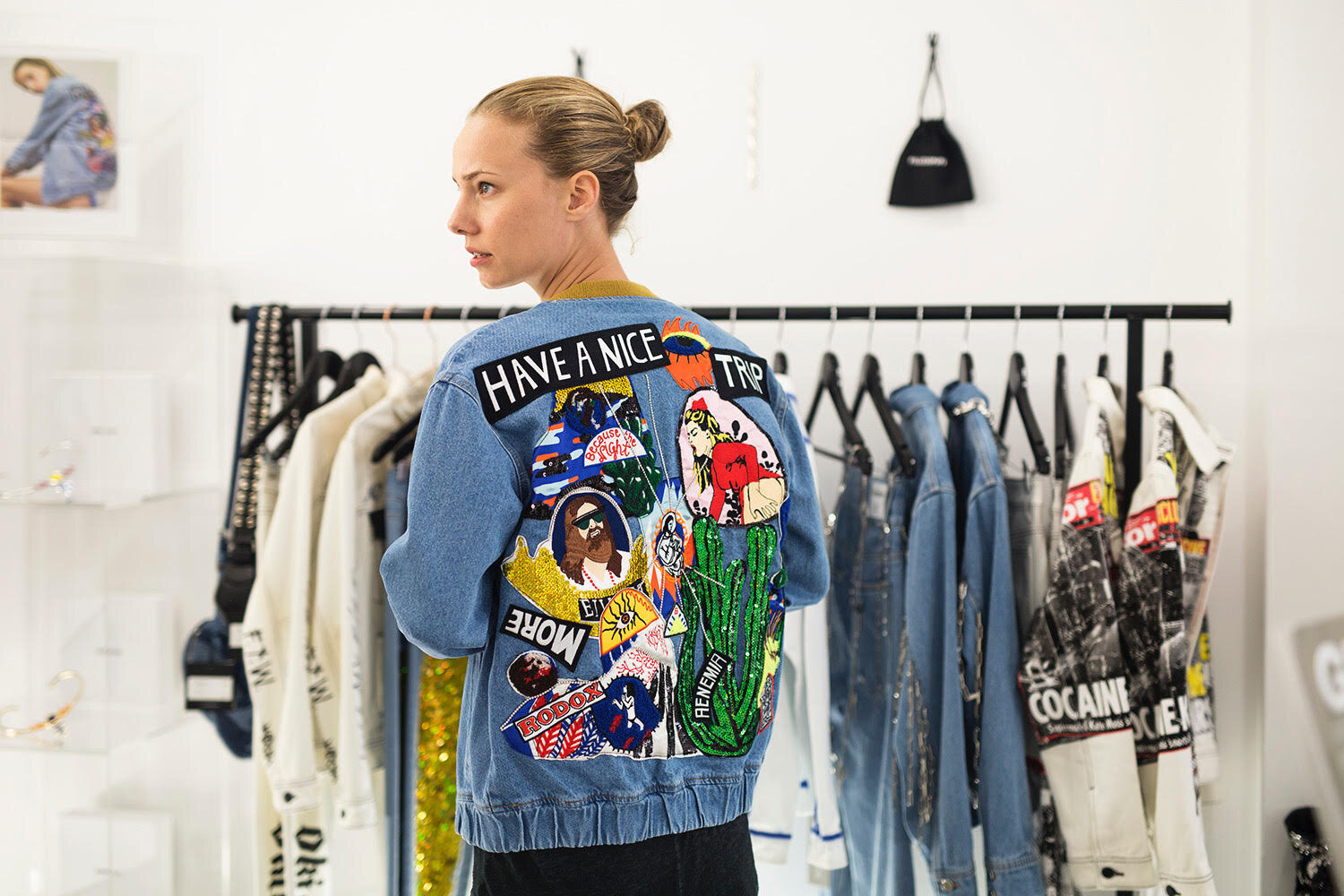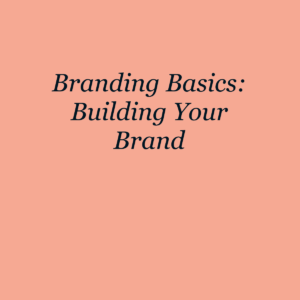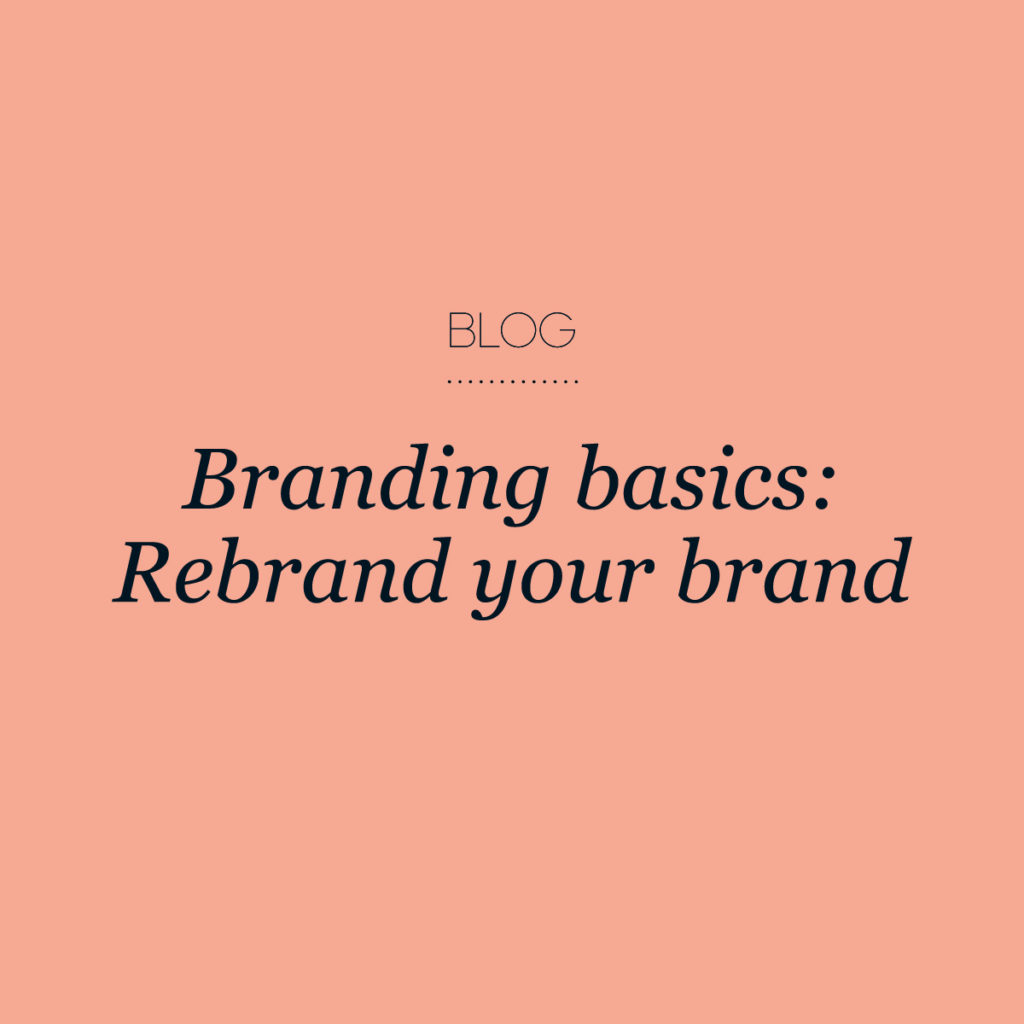Meet Mirte van der Lugt, Brand Director of Hey Tiger!
Hey Tiger's Brand Director Mirte, originally from The Netherlands, moved to Australia four years ago. With a background in both fashion and branding across Europe and Australia, she worked on campaigns for brands such as Nike, Landrover, Microsoft and a variety of young start ups. She brings a different approach to the Australian chocolate industry, looking at Hey Tiger as a lifestyle brand vs confectionary. For her, brands are all about inclusivity, making people feel accepted and part of something greater. Every like, follow, thumbs up and comment is a real human interaction and it’s important to never lose sight of that.
Hey Tiger's Brand Director Mirte, originally from The Netherlands, moved to Australia four years ago. With a background in both fashion and branding across Europe and Australia, she worked on campaigns for brands such as Nike, Landrover, Microsoft and a variety of young start ups. She brings a different approach to the Australian chocolate industry, looking at Hey Tiger as a lifestyle brand vs confectionary. For her, brands are all about inclusivity, making people feel accepted and part of something greater. Every like, follow, thumbs up and comment is a real human interaction and it’s important to never lose sight of that.
I grew up in…
the Netherlands. In a town 40 minutes outside of Amsterdam. My younger brother and I were (and are) incredibly lucky with our parents. My mum introduced me to art and encouraged my creative side. While my father brought in philosophy and a wide understanding of business and human behaviour. When I think of it that way, it was the perfect melting pot for a career in branding.
Education
My early school life was off to a rocky start. With my Dyslexia and ADHD labels firmly clipped to my back, I was anything but the ideal student. Schools denied me, test results were covered up as to not effect the schools reputation and the teachers weren't all that excited to have this difficult kid in their class. If it wasn’t for my parents and one incredible teacher who believed I could do more, I truly don’t know where I would have ended up. It wasn’t until I made a big change in high school that everything turned around. I found my passion for art and film and the kid that was once called dumb by her teachers (no joke) was now thriving at school. It’s funny what happens when a kid realises they only have themselves to rely on when it comes to education. I was only going to get out what I was putting in. Now that I was doing it for myself and I no longer listened to the negative feedback from my teachers, I started kicking ass.
After High school I travelled for 3 months through Thailand where I met my Aussie beau Damon. After meeting him, I decided to live in Australia for a year and then Damon and I moved back to Amsterdam. I began my bachelor degree at The Amsterdam Fashion Institute where I studied fashion and branding.
What did you do straight after your studies?
I moved to Australia to be with my now husband Damon. I first began working at an ad agency where I worked on brands such as Nike and Jeep. After that, I moved to a branding agency to work on brands such as Cadbury and Matilda Bay’s Fat Yak. But something was missing. I wanted to work for brands that my values aligned with and put my creativity into campaigns that truly do some form of good in the world. I then set out on my own, working with my own clients. A little while later, holy smokes! How grateful was I to meet the glorious Cyan Ta’eed - but we can fan-girl about her later.
My business is located at
Our kitchen and office is in Cremorne, Melbourne but you can buy Hey Tiger online via our website.
What does a typical work day look like for you?
My role is split into a bunch of different pieces. Let’s put it down to Manager, Producer, Planner and Do-er.
As a manager I need to manage and motivate my team. Make sure they know exactly what they're doing, where the priority lies and that they keep up-beat and feel heard. We’re a young, small company that is growing fast. This means we’re demanding a lot from everyone. So it’s important that they know we’re a team and how valuable and important their piece of the puzzle is.
As a producer I need to make sure departments work together to get our deadlines over the line. From external work with clients like Mecca to internal work like filming content for our socials, creating presentations for wholesale and getting new packaging to print. This would be impossible without our amazing new junior designer Erin Langford. Her incredible eye for detail and brilliant creative mind have become invaluable to our team.
As a planner I need to make sure our future campaigns are living up to our audiences expectations. For this I heavily lean on my right hand Breana Phillips (gulp! I just freaked out a little thinking of what Hey Tiger life would be like without her! I might need to take Beyonce’s advice and buy her that ring. Too much?). We work tirelessly and seamlessly to make sure all our marketing efforts are effective and on brand.
As a do’er, I also need to create and do The-Work. New campaigns, packaging designs, website collateral, ad’s, photoshoots, social content, styling… this is where Hey Tiger’s brand truly comes to life.
Oh and did I mention meetings and emails yet? Let’s just leave that for now shall we.
What have been some of the biggest challenges in your career?
I once was part of the growth of a small branding agency. I was in charge of building the agencies brand, new business and its culture. We started with 6 people and soon grew to about 15. Our energy and growth caught the attention of big clients and soon its father company saw an opportunity. They decided to merge the two in order to leverage the expertise of the father company and the youthfulness and growth of ours. I remember being worried this would negatively affect everything we had worked so hard on. Sadly my worries became reality.
What followed was a year long struggle in knowing it was time for me to leave while wanting so much to stay and have it return to its old glory. I saw its culture diminish, I saw mistakes being made. I saw the company turn its back on its people and the fun and quirky brand we’d created - which had done so much for clients and culture.
In hindsight, I stayed too long, but I learned so much from the experience. The importance of taking authentic risks with your brand and the importance of culture and team.
What do you love best about your job?
Seeing people in our social community create artwork, photography, video’s with our products and on top of that, hearing how Hey Tiger makes them feel. This makes it incredibly rewarding. People truly feel part of our family and Hey Tiger genuinely gives them that unfiltered, simple joy.
Inclusiveness is one of my biggest personal values and Hey Tiger is no different. We put incredible effort into making everyone who contacts us feel heard and seen (even if we get negative comments - everyone gets treated the same). When someone posts about us, we make sure we thank them, TRULY, thank them. because what an honour that they graced us with that small square on their feed! I believe that it’s because of this that people feel so connected to Hey Tiger.
On top of that, it is our purpose. I'm incredibly grateful for Cyan Ta’eed (fannngirl time!) who founded Hey Tiger and brought this unique group of people together. She said “how can something (chocolate) that gives us so much joy do so much harm in the world?” and the action she took truly speaks to her character. She could have set up a for profit company but instead she turned the other way. Starting a value based brand that truly does good in the world. The fact that we’re not all bells and whistles but actually walk the talk with a stellar product, a learning attitude and an important purpose is a dream come true. I know that our hard work is not just lining the pockets of the big cheese but instead it is going to support our efforts to positively change an industry that is fundamentally broken.
What do you get up to when not working?
I’m a bit of an extroverted introvert. While during the week I bounce around a million miles an hour, I like to take it easy on the weekend. My husband and I bought a block of land in Daylesford a few years ago and are now in the process of building our house so we can escape there on the weekends. The concrete has been poured and last weekend we saw the wooden frames that will make up our walls. Walking through this was an incredible experience and we can’t wait for it all to be done. This won’t only mean we will be able to escape to the incredible Australian nature on the weekend but also that specifically my parents can make the 24 hour flight down under and come stay here for several months. I truly want to make them feel at home and having them here would mean so much. Yes, your girl misses her Mum and Pops every day.
What’s on the horizon for the future?
Hey Tiger, Hey Tiger, Hey Tiger. I believe this brand, its team, its product and its purpose is at the start of something big and I’m willing to work my butt off to get it there. Besides that, my husband and I always dream of creating our own furniture. He is a furniture maker and we’re always juggling ideas on how to make this a reality. The piles and piles of wood on our land in Daylesford is looking like a good opportunity to make this a reality BUT all in good time.
If you had any creative business advice what would it be?
Don’t be afraid to take risks and show your authenticity though your brand. We love leaning against the weird, having fun and joking around. We recently did a collaboration with instagram’s favourite dog Tofu. (@tofupupper). It took some convincing in the team, afterall, dogs don’t eat chocolate right? But it was one of our most successful campaigns to date. Decisions like this is what sets us apart from our competitors and makes us truly stand out - while having a whole lot of fun in the process. The genuine fun we have during our campaigns truly shines through our work and our audience feels that.
Screenshot of ‘Tofu’s Dream’ campaign video by Hey Tiger.
If you could be anyone else for a day, who would it be and why?
I’m really into philosophy, psychology and cultural behaviours. Because of that I would love to step into the mind of the people who write about or work in this space. I have a list of historical people but let’s keep it into 2019 shall we? Psychologist Esther Perel is one of them. To be in her mind and work with her patience would be incredible. For those interested, she recently started a podcast “Where should we begin” where she takes you into her counselling sessions with couples. It’s fascinating to listen to people's struggles and problems as it shows us how similar and human we really are but also how incredibly hard and beautiful it is for people to live and love together. It’s humbling. Other people would be the historian and philosopher Yuval Hoah Harari (Sapiens), the American Journalist Sebastian Junger (Tribe) and the author Robert Greene (The Laws of Human Nature). To step into their mind for a day and have the knowledge they possess. Pffeeewwweee transport me now...
Branding basics: Building your brand
Building a brand is one of the most important parts of business, yet also one of the most overlooked. For a brand to be sustainable, it must evolve with a business’s life cycle and meet the changing needs of its audience.
Here are five things to consider to when building your brand:
- Vision
A strong brand starts with a vision. If you’re unsure what yours is, ask yourself the following:
- Who do you want to serve?
- What are your brand’s values?
- What is your “why”? (Meaning, why do you do what you do?)
Once you identify these points and present them in a clear way people can understand, you’ll start attracting an audience that shares those values and relates to your “why.”
- Credibility
It’s natural that people will wonder if you can really deliver what you say you can, so having a quality designed brand identity and website is the first step to instilling trust in your audience. Testimonials, case studies (where applicable), and high-quality photos of your work will also help alleviate doubt, convey professionalism, and establish your expertise. Credibility by association is another way to positively shape people’s perceptions of your brand, so make an effort to align your business with leaders in your industry (and others) and people who are smarter than you.
- Authenticity
There is no shortage of pretenders on the Internet, which is why being authentic is so important. While many businesses might have a tightly curated Instagram feed, people want to see what goes on behind the scenes because it’s more relatable. For example, showing sketches of your latest design will give people a look into your creative process instead of just the final product. Being true to yourself, knowing your brand, and injecting your personality into it will help you stand out in your competitive industry and attract people who resonate with you.
- Visibility
Your brand needs to be visible in order for people to recognise it. Positioning your brand in front of the right people in the right places at the right times will keep your brand front of mind and help it become memorable. For example, if there’s an event your audience will be attending, find a way to promote your brand to them through that event. The more it is seen, the more likely people are to remember you when they need the products or services you offer. Never give people time to forget about you.
- Consistency
As with anything, consistency is key to achieving results, and your brand is no different. Being consistent shows that you’re reliable; in turn, people will know what to expect when dealing with you. For example, having the same imagery across all your communications will encourage trust and brand recognition. If you’re consistent with when and how you communicate, your brand will grow sustainably.
Remember, your brand is one of your business’s most valuable assets and building it is an ongoing process that takes time, work, commitment, and passion to be successful.
Mirella Marie is the owner and creative director of Vertigo, a Melbourne-based graphic design studio specialising in brand identity and design. She is also a contributor for Women of Graphic Design, a project examining the work of female designers around the world. Join her on Instagram at @studiovertigo.
Branding basics: Rebrand your brand
Rebranding is changing the image of a business. It focuses on how the business is perceived and how it has developed beyond its original goals and values. Some businesses will rebrand in their early lifecycle once they’ve discovered who they are, what they’re doing and where they’re going, while others will rebrand after having grown (or outgrown) their existing brand.
Your goal when rebranding should be to build upon your existing brand in order to maintain its audience, awareness, recognition and loyalty. If you steer your brand in a completely different direction, you may need to build it up again from scratch.
Reasons to rebrand
- A change in the type of products or services that would attract new customers (or disengage current ones). For example: you changed your product from chemicals in plastic packaging to plant based ingredients in biodegradable packaging.
- Changes to business ownership or structure. For example: hiring staff, bringing on a new management team, sole trader registering as a company.
- Leading the business into a new area. For example: expanding into international markets or other industries.
- Negative publicity. For example: a social media campaign, ad campaign, or brand spokesperson that offended the public; your audience discovering your products and services are not sourced, produced or advertised ethically.
- Staying relevant. For example: incorporating a responsive online store and a complementary app so your customers can place orders straight from their phone.
- Changes in customer needs. For example: offering more eco-friendly and sustainable products and services to a growing socially aware audience.
Reasons not to rebrand
In most cases, the following challenges may be resolved with the redesign of an existing brand identity and design materials without requiring a complete overhaul of the brand itself:
- Professional image. Your logo, branding and marketing materials are DIY, but now your business is up against competitors who have quality, strategic brand identities designed by professionals.
- Lack of consistency. Communication and marketing materials are not consistent in their design and implementation, which can affect brand trust and recognition.
- Outdated logo. It was designed 10 years ago based on what was trending at the time.
Launching a rebrand
- Don’t launch your rebrand until your brand identity and design have been updated and implemented across all touch points (where possible). For example, having a new logo on your website and an old logo on your business card will not only make you look unorganised and unprofessional, it will confuse your customers. If your customers are confused, they will turn to your competitors.
- Launch your rebrand internally first to your employees and educate them on what it means and why it matters. Your employees need to feel excited and emotionally connected to the brand and most importantly, they need to believe in it. If you don’t have employees, ask your friends and family.
- Gradually lead up to launching your rebrand to your audience in order to build anticipation. Engaging your audience and giving subtle hints that something new is coming will excite them and make them feel involved.
Things to consider
- Why do you want to rebrand?
- What do you want to achieve from a rebrand?
- How are you going to achieve it?
- Who do you want to target?
- How will the needs of your new audience meet the needs of your current one?
- Will your customers still identify with your brand?
- Have you conducted any research into your competitors, market, audience and industry to determine if a rebrand is the best decision for the direction you want to take your business?
Rebranding needs to be driven by strategy, vision and research. Before you consider rebranding your business ask yourself if you really need to, because if ain’t broke, don’t fix it.
Mirella Marie is the owner and creative director of Vertigo, a Melbourne based graphic design studio specialising in brand identity and design. She is also a contributor for Women of Graphic Design, a project examining the work of female designers around the world. Join her on Instagram @studiovertigo.








